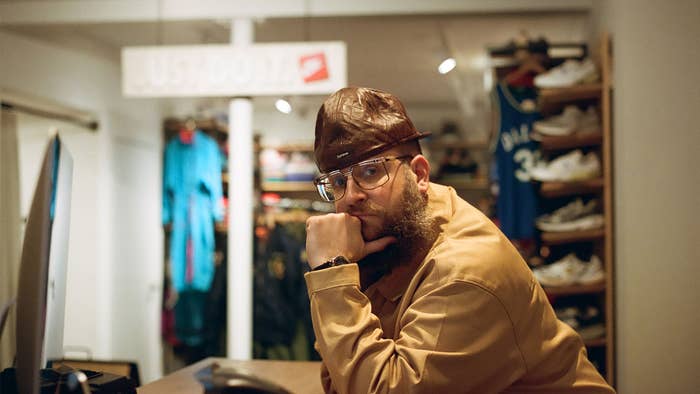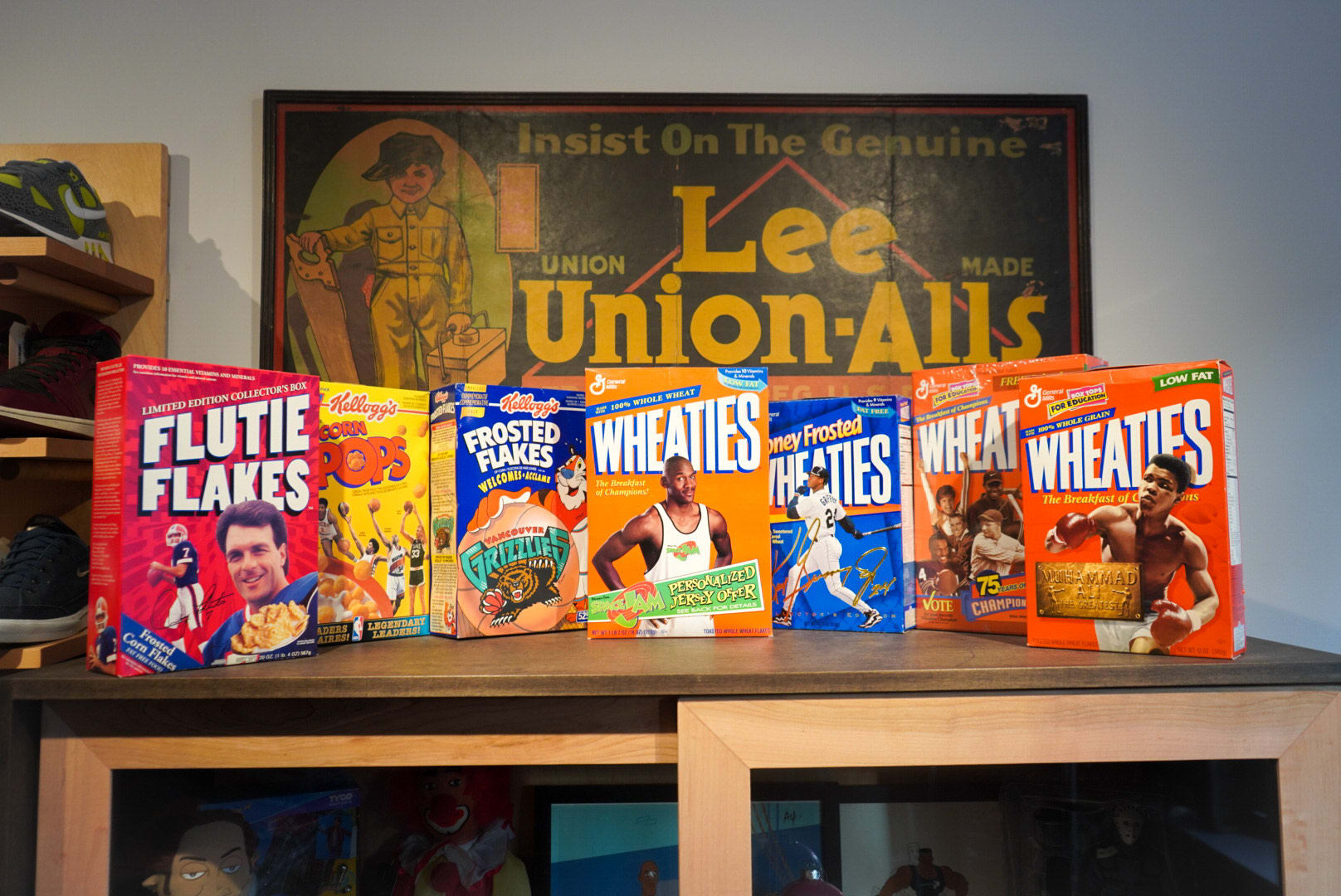
A few months ago, Josh Roter, owner of the vintage streetwear shop In Vintage We Trust, unveiled a collection of hand-picked vintage T-shirts from the ’80s and ’90s bearing the logo for Harley-Davidson—the kind of nostalgia-rush classics that have illustrations of huge American eagles on them and slogans like “Best of the Breed.” Roter and his business partner, Chantal Varela, had spent a long time diligently curating this exclusive Harley reservoir, hunting down each item, having it cleaned, taking its measurements, and taking professional photographs. And as is customary, they released the collection first in their popular storefront on West Queen West in downtown Toronto. The result? “No one even looked at them,” Roter says.
“In Toronto, there aren’t that many people looking to buy a Harley-Davidson tee for $150,” he explains. “And that’s fine—that’s why we have product at different price points available online and in the store. I would say a lot of people who are coming in to shop for a graphic T-shirt aren’t looking to spend $150 on it generally. It’s gonna be closer to the $34-$38 range, which we also have.” But the thing about those vintage Harley tees is that they really are worth $150—they’re very rare, highly coveted, and command enormous sums among dedicated Harley collectors and fans. Those collectors and fans just might not be shopping on Queen West.
“So we put those shirts online,” Roter says. “They sold out within about a minute.”

Roter and Varela, with their brick and mortar showroom, roots in the city, and vaunted pedigrees in the trade, are OGs of the vintage streetwear business. Their weekly drops of classic sports jerseys, old crewneck sweaters, novelty caps, movie merchandise, band tees, and more are always hugely sought after, and when the actual storefront is open to customers—COVID restrictions have limited them to online orders and curbside pickup for the last three months—there’s a long line to get in around the clock every weekend. If you want to see grown men queue for an hour for a chance to grab a mid-’90s Tony Kukoc jersey, you just have to head to Parkdale to scope it out.
“You have all these people sitting at home. If you’re looking online and you see a T-shirt that has a movie or a band or something you loved growing up that you recognize, you get a dopamine hit.”
Vintage has never been more popular among streetwear aficionados, and stores like Roter and Varela’s are thriving. Vintage 905, in Whitby, Ontario, recently attracted media attention after several of its vintage tees started popping up on rappers and NBA players in tunnel pics: everyone from The Weeknd to Jrue Holiday has been picking up these kinds of retro graphic tees. It’s all stores can do to try to keep up.
But the vintage streetwear business is evolving, and In Vintage We Trust is also on the forefront of a new wave of interest in their wares. Vintage streetwear sellers are cropping up on the Internet all over the country, and with an array of tools available to them—from eBay and Facebook Marketplace to Etsy and auctions on Instagram Live—people who specialize in this stuff are finding that their niche industry has become a bona fide craze.

David MacMullen, of the resale site We Got Grails, used to specialize exclusively in second-hand and deadstock sneakers. But lately, he’s pivoted toward the vintage streetwear market, which he says has exploded to such an extent that it still hasn’t been properly tapped. Mike Tyson, Darth Maul, Joe Carter: if it’s an icon of the ’90s, David probably has a vintage shirt with them on it.
MacMullen explains that while he operates a conventional webstore and sells things the usual ways, he’s mainly invested in selling vintage via Instagram Live, where vintage sellers like him have flocked to run live auctions. People from all over the world can drop in, watch the auction as it happens, and add comments to bid from one moment to the next. MacMullen runs these auctions regularly in the evenings and on weekends, and they attract hundreds, and sometimes thousands, of eager bidders. Like a real auction, the bidding can get very heated.
“Let’s say I bought an old Toronto Blue Jays shirt for $20 and I want to sell it for $60,” MacMullen says. “I could just post it on eBay and hope that someone willing to pay $60 for that shirt will come along and happen to see it. But if I put it on Instagram and start bidding at one dollar, people get really invested in the process of bidding, and it makes them run up the price because suddenly they really want that shirt.” In the heat of the moment, and with the motivation of competing against others, people may not have time to check the market price or see if there are cheaper alternatives elsewhere.
Plus, from the perspective of the seller, things are much smoother. “It’s just like a real-life auction in that the highest bidder has to pay the seller right away. It’s binding. There’s no haggling or negotiating prices, like with shoes. The online buys are right away.” It’s such an attractive system, MacMullen says, that people with popular Instagram accounts have started selling time slots for Live auctions to sellers with a smaller audience. “If you can pull views, you have a higher chance to run the product to higher prices,” he says.
Brendan Toft, who runs the Calgary-based 403 Clothesline Collection, only started selling vintage streetwear this past June. Like a lot of people, Toft found he had a lot more leisure time thanks to the coronavirus, and as a way to pass the time, he found himself sorting through his old T-shirts at his mom’s house. A long-time collector, he felt he had some interesting stuff, so picked a few choice items and brought them into a vintage shop to see if they’d take them off his hands. “The guy offered me $150 for five shirts,” Toft remembers. “I had no idea there was that much of a market for it. So from that point on I started going to thrift stores and seeing what I could find.”
Toft’s Instagram page is littered with ’90s gems: T-shirts emblazoned with the faces of Bartman, Criss Angel, Theoren Fleury, or Dale Earnhardt; old merch for video games like Star Wars Podracer or Batman Forever. Other sellers, he points out, specialize in even more specific niches: Marvel superheroes, anime characters, Looney Tunes. All of it has an audience, and if the product is old and of high quality—he says to look for single-stitching and reliable brands such as Gildan and Fruit of the Loom—it might sell for as high as a couple hundred bucks.
The reason, as Toft sees it, is the need for a certain kind of comfort and pleasure—at a time when comfort and pleasure seem to be in short supply worldwide. “You have all these people sitting at home. If you’re looking online and you see a T-shirt that has a movie or a band or something you loved growing up that you recognize, you get a dopamine hit. And there’s not a lot of dopamine going around anymore,” he explains. When you’re talking about happiness in the midst of global crisis, those hundred dollar price tags no longer seem quite so expensive. What price can you put on precious memories? “When you see that T-shirt arrive in the mail, that feeling of nostalgia you get feels really good,” Toft says. “It’s helping people get by.”

